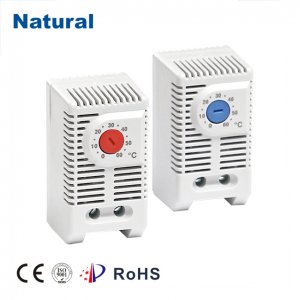Thermostat temperature controllers have come a long way since their inception. These remarkable devices have revolutionized the way we manage indoor climate, providing comfort and energy efficiency like never before. In this article, we’ll explore the evolution of thermostat temperature controllers, from their humble beginnings to the cutting-edge technology of today.

The Birth of Thermostat Temperature Controllers The concept of controlling indoor temperature dates back to ancient civilizations, where people used simple methods like opening windows or adjusting the position of sun-facing structures to regulate temperature. However, the modern thermostat as we know it didn’t emerge until the 19th century. The first thermostat, invented by Andrew Ure in 1830, was a mercury-based device that used the expansion and contraction of mercury to control a furnace. This marked the beginning of a new era in climate control, laying the foundation for the sophisticated devices we use today. Mechanical Thermostats: The Early Innovations In the early 20th century, mechanical thermostats became popular. These thermostats utilized bimetallic strips, which would bend as the temperature changed. This bending action would either open or close an electrical circuit, thereby controlling the heating or cooling system. Mechanical thermostats served as a major advancement in their time, but they had limitations. They were not very precise, often resulting in temperature fluctuations and increased energy consumption. The Digital Revolution The digital revolution in the 1980s brought about significant changes in thermostat technology. Microprocessors allowed for more accurate temperature control and the ability to program heating and cooling schedules. This marked the transition from manual adjustments to automated climate management. Digital thermostats also introduced the concept of setback programming, which allowed users to lower or raise the temperature automatically when they were away from home, thereby conserving energy. Smart Thermostats: A Game Changer The 21st century ushered in the era of smart thermostats. These devices, connected to the internet and equipped with sensors, opened up a world of possibilities. Users could now control their thermostats remotely using smartphones or voice commands. Smart thermostats also introduced machine learning algorithms, which adapt to user preferences and optimize energy consumption. They can even provide energy usage reports and suggest ways to reduce energy bills. The Future of Thermostat Temperature Controllers As we look to the future, the evolution of thermostat temperature controllers continues. Innovations such as geofencing, where the thermostat adjusts the temperature based on the user’s location, and integration with other smart home devices, are becoming increasingly common. Moreover, sustainability is a growing concern, and thermostats are playing a pivotal role in energy conservation. The development of eco-friendly thermostat technologies is on the rise, helping reduce carbon footprints and combat climate change. In conclusion, thermostat temperature controllers have evolved significantly over the years, from their rudimentary beginnings to the smart, energy-efficient devices of today. With ongoing advancements in technology and a growing emphasis on sustainability, the future of thermostat temperature controllers promises even greater comfort and energy efficiency for all. These devices have truly become a modern marvel in the world of climate control.